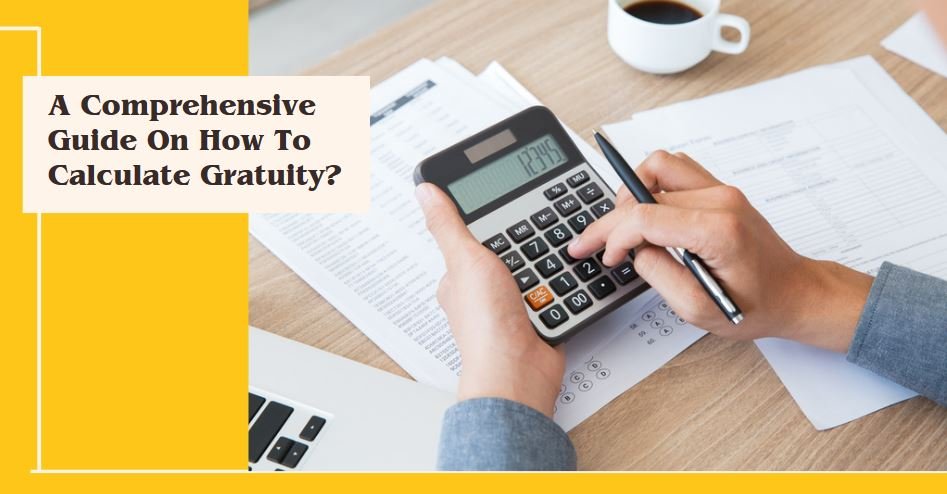A Comprehensive Guide On How To Calculate Gratuity?
Working with an organization for a long period of time has many benefits. And the gratuity amount is one of them. Gratuity payments are one of the components that make up an employee’s gross salary. If you want to learn more about gratuity, read this article thoroughly.
What Is Gratuity?
The sum paid by an employer to an employee in return for services rendered to the company is known as a gratuity. On August 21, 1972, the Payment of the Gratuity Act, 1972 was first introduced and passed by Parliament of India and became applicable from 16th September 1972. It should be stated that the only employees eligible for a gratuity are those who have worked for the company consistently for at least five years or more. On the other hand, the employee may get the gratuity prior to the five-year if they become disabled as a result of a disease or accident. The purpose of the payment is to assist employees financially after they leave the company. It expresses appreciation for the employee’s contributions to the company.
What Is Gratuity Eligibility Criteria?
To be eligible for the gratuity, you must meet all of the following criteria:
- You must be eligible for superannuation.
- You must have retired from service.
- You must have resigned after five years of continuous employment with the organization.
- The gratuity is paid to the nominee in case of your death, or to you if you become disabled due to sickness or an accident.
Formula For Calculating The Gratuity-
The gratuity rules and calculations are defined under the Payment of Gratuity Act, 1972. Employees are classified into two categories according to the Act:
- Employees Covered Under the Act
- Employees Not Covered Under the Act
Employees Covered Under The Act
The formula below can be used to calculate gratuity:
Gratuity (G)= n*b*15 / 26
In this formula,
n= The tenure of service an employee has completed in the organization
b= Last drawn basic salary + DA(dearness allowance)
For example,
If individual A has worked with an organization for a period of 15 years. And the last drawn basic salary plus dearness allowance was Rs 30,000.
Gratuity = 15 * 30,000 * 15 / 26 = Rs 2,59,615
Employees Not Covered Under The Act
The employees will still get the gratuity amount even if the organization is not covered under the Gratuity Act. However, there will be a change in the number of days from 26 to 30.
Here is the formula for calculating gratuity:
Gratuity = (15 * Last drawn salary amount * the working tenure) / 30
For example,
If Mr. John has worked for a company for seven years, the organization is not covered under the Gratuity Act. And his basic salary was Rs. 35,000.
Gratuity Amount = (15 * 35,000 * 7) / 30 =1,22,500.
What Are The Taxation Rules For Gratuity?
Although the gratuity amount is taxable, some tax exemptions are provided under the Income Tax Act. The taxable gratuity amount is considered as ‘Income from Salary’ while filing income tax returns. The tax exemption rules differ from employee to employee based on the category of the employer and their coverage under the Gratuity Act.
You are eligible for complete tax exemption on the whole gratuity amount if you are a government employee. You are eligible for tax exemption on the least of the following if you are a non-government employee covered by the Gratuity Act:
- The limit of 20 lakh (the highest limit notified by the government, amended from the previous limit of 10 lakh).
- The last draw Basic Salary x Service Years x 15/26.
- The actual amount of gratuity received.
In the event that your employer is not covered under the Gratuity Act, you are eligible to get a tax exemption whichever is the least:
- The average salary for a half-month multiplied by the number of completed years of service.
- Gratuity is maximum of up to 20 lakh rupees.
- The whole gratuity amount received.
Where Can One Invest The Gratuity Amount Received?
When it comes to investing your gratuity, you should think about options that fit your investment horizon, risk tolerance, and financial goals. Some common choices of investments you could make with your gratuity are Fixed Deposits (FDs), Public Provident Fund (PPF), Employee Provident Fund (EPF), National Pension System (NPS), Equity Mutual Funds, Debt Mutual Funds, Sovereign Gold Bonds (SGBs), Real Estate, Stock Market, and Bank Recurring Deposits (RDs).
Conclusion
Calculating gratuities is a crucial step in securing your financial future, particularly in retirement. A gratuity is more than just money; it’s the reward for all of your years of hard work and devotion. Keep in mind that this is a worthwhile reward for your work as you work through the calculation process.
Frequently Asked Questions(FAQs)
Which types of employees are covered under the 1972 Gratuity Act?
For employees in factories, mines, oilfields, plantations, ports, railway companies, shops, or other connected establishments, the Payment of Gratuity Act, 1972, is applicable. This act also applies to all types of government jobs. Except for Jammu & Kashmir, it applies in all states of India.
Do contractual employees qualify for gratuities after five years of continuous employment?
Any employee on an organization’s roll becomes an employee of that company and is eligible for a gratuity from the company. On the other hand, contractors are not technically considered employees of the company, and they are responsible for paying gratuities.
Will the employee still receive a gratuity if the employer goes bankrupt?
In the event that the employer declares bankruptcy, he cannot refuse to give gratuity to his employees.
I resigned from the job after four and a half years of employment. Would I be entitled to a gratuity?
No, in order to be eligible for a gratuity, you have to work continuously for at least five years. In the event of an accident or illness that renders the employee disabled before five years of employment, the gratuity would be paid.
What is the duration of time it takes an employer to pay the gratuity?
In accordance with a government mandate, the employer is required to pay the gratuity application amount within 30 days of receiving acknowledgement of its receipt. The employer will be penalized in case of delay in payment, and interest will be charged on the gratuity amount from the date of due until the payment is made.




